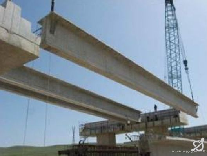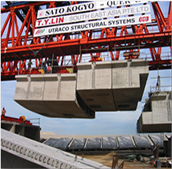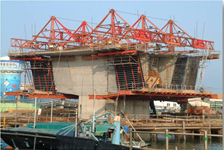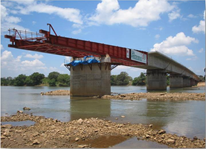Picture: Bac Hung Hai Bridge
UTRACON is equipped with the required technical competency to carry out the construction of bridges using the many types of bridge construction methods as illustrated below:
 Precast Girders
Precast Girders
Most economical when span is not greater than 40m and when the site is free of traffic movement and is accessible to mobile cranes for tandem lifting.
Precast girder launching is usually performed after midnight when the affected roads or expressways can be closed to traffic
 Span by Span Precast Segmental
Span by Span Precast Segmental
When the bridge span is moderately large and when there are sufficient spans for the deployment of an universal launching truss.
Precast segments must be able to be delivered right beneath the launching truss throughout the entire length of the bridge for a direct lift.
Balanced Cantilever Precast Segmental
Suitable when precast segments can be delivered from rear erected spans or from beneath span.
Can be erected in multiple construction fronts via employment of more than 1 set of lifter.
In situ Construction using Form-traveller 
Suitable when bridge section is of varying depth.
Can be erected in multiple construction fronts via deployment of more than 1 set of form-traveler.
Launching Girders
It is an effective launching system and will only be economically viable for a relatively long stretch of viaduct construction. The launching truss is generally self-launching and is usually adopted to launch an entire precast girder, weighing up to 300 tons.
Beams to be launched are generally transported to the launcher from the rear spans via locomotive, or other transport vehicles.
The beams serve as counter weight while the launcher is crossing to the next span.
 Incremental Launching Method
Incremental Launching Method
It is adopted when there is no access at the construction front, generally over a ravine or a very busy road interchange.
The bridge horizontal alignment must be straight, or of constant radius of curvature.